How Do You Install a Light Fixture Into a Blue Box
How to Replace a Light Fixture
Replace a light fixture without the hassle with these electrical tips from veteran pros.
Every editorial product is independently selected, though we may be compensated or receive an affiliate commission if you buy something through our links. Ratings and prices are accurate and items are in stock as of time of publication.
Introduction
Replace a light fixture more quickly, safely and with more confidence with the electrical tips and techniques used by pros. These electrical tips solve the most common problems you're likely to encounter.
Tools Required
Materials Required
- Box extender
- Mounting brackets
- Stab-in connectors
Replacing Light Fixtures: Solving Unanticipated Electrical Problems
Replacing a light fixture is one of those DIY jobs that's theoretically quick and simple, but often becomes a three-hour series of problems.
So we talked with two of our master electricians. They've seen — and solved — all those frustrations and offered these tips to help DIYers through the job quicker and safer. We won't show you here, but this article will walk you through how to hang a ceiling light fixture and how to hang a pendant light fixture.
Project step-by-step (14)
Step 1
Flipping the Breaker isn't Enough
- Even after you turn off the breaker that controls the light's circuit, you can still get shocked. How? Some junction boxes contain wiring from multiple circuits.
- Pro tip: So even if you cut the power to the light fixture, there may still be live wires in the junction box.
- To be safe, check all the wires in the box with a non-contact voltage detector before you disconnect any wires.
- Just touch each wire's insulation with the tester. If the light glows, the wire is live.
- Pro tip: You don't have to actually touch a bare wire to check for voltage with this detector. Holding the tip on or close to the wire's insulation is enough.
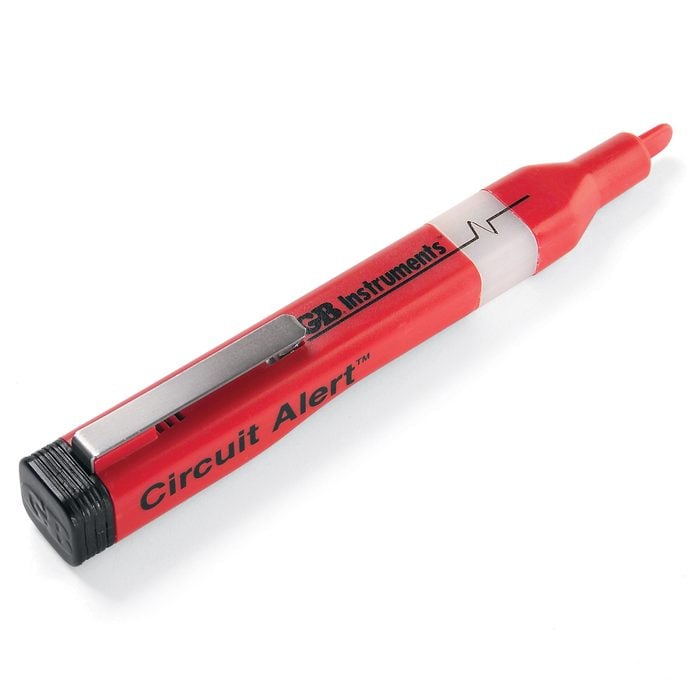
Step 2
Buy Extra Mounting Brackets
- The mounting brackets supplied with your fixture may not work with your junction box.
- So when you buy your new fixture, also pick up a few other styles of mounting brackets.
- Pro tip: Better to spend an extra five bucks than to make a trip to the hardware store in the middle of the job.
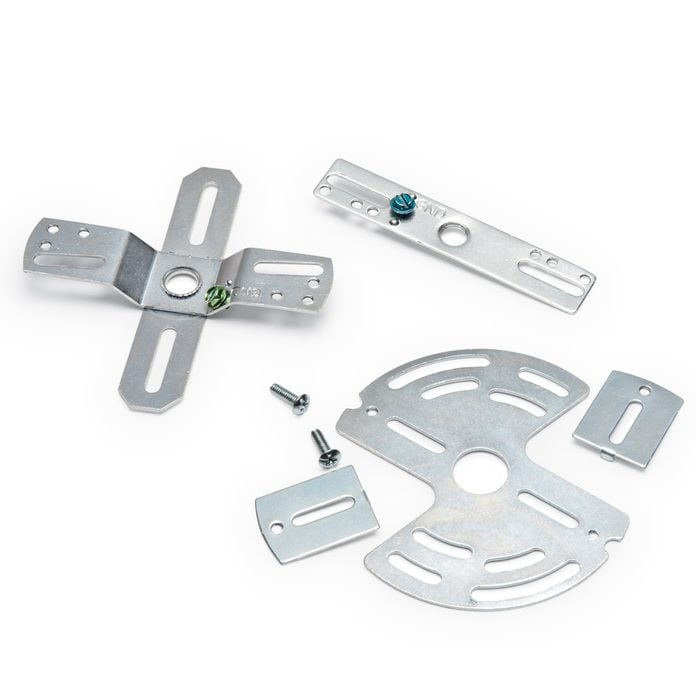
Step 3
Slick Solution for Long Screws
- If the fixture mounting screws are too long to fit in the box, you'll need to cut them.
- A hacksaw works but makes a mess of the threads.
- Pro tip: A wire stripper with built-in bolt cutters is the way to go.
- Just thread the screw into the correct size threaded hole until you get the length you need and squeeze the handle.
- As you remove the screw, the tool cleans up the threads at the cut end.
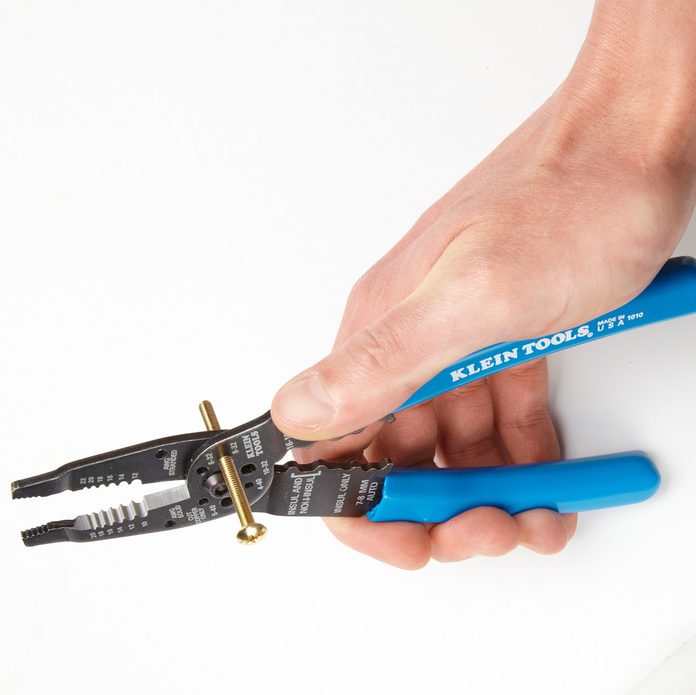
Step 4
Short Wires, No Problem
- When the wires in the box are too short, making connections is aggravating. Instead, pick up a few stab-in connectors.
- In tight spaces, they're much easier to use than twist-on nuts.
- Push a "pigtail" (a new piece of wire) into the connector, then push the connector onto the old wire. Now you've got plenty of length to connect to the fixture's wires.
- Pro tip: Make sure the wire you use for the pigtail is the same gauge as the existing wire.
If you have aluminum wiring, don't work on it yourself. The connections require special techniques. Call in a licensed pro who's certified to work with it.
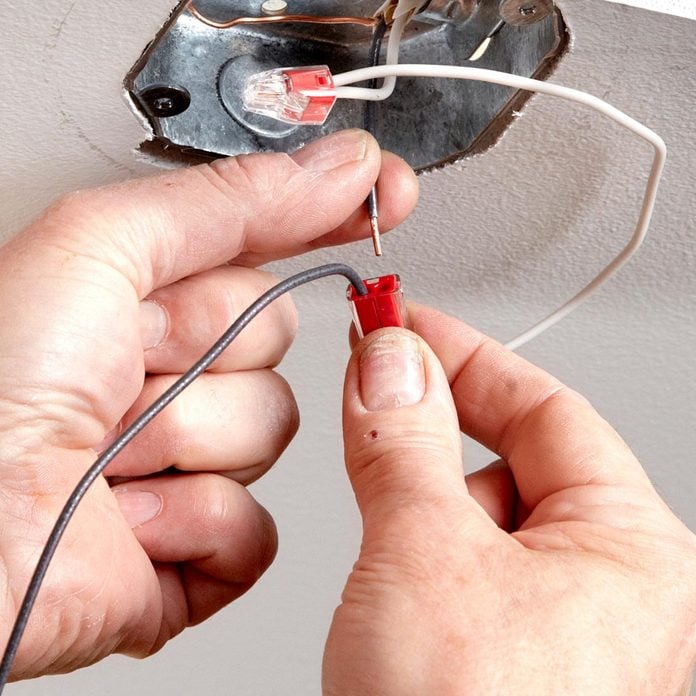
Step 5
Extend the Box
- If the junction box is recessed more than 1/4 in. from the surface of the wall or ceiling, you've got a code violation.
- This is common when a layer of drywall or wood was installed over the original ceiling.
- To correct it, add a box extender.
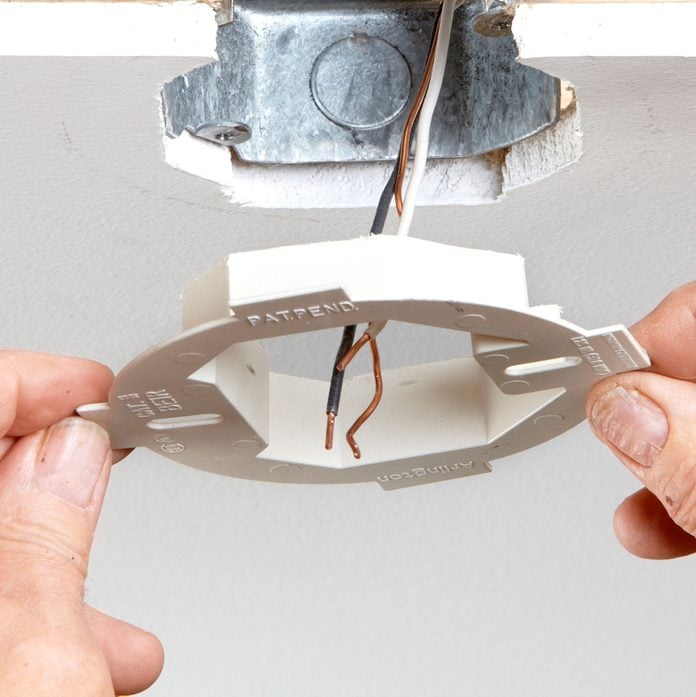
Step 6
Improvise an Extra Hand
- Connecting a fixture takes three hands: one to hold the fixture and two to make the connections.
- If you don't have a third hand, hang the fixture from a scrap of wire or a coat hanger while you make the connections.
- Pro tip: Bend a scrap of wire to support the fixture while you wire it.
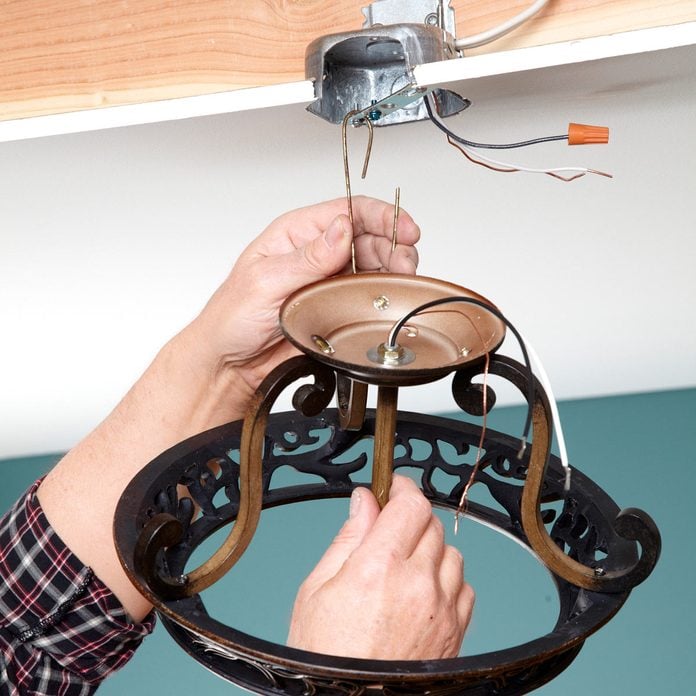
Step 7
Aligning the Screw Hole
- Many fixtures have a canopy that's held in place by two screws.
- Aligning the first screw is easy enough because you can tilt the canopy a little and aim for the screw hole above it.
- To align the second screw, stick a skinny screwdriver or a nail into the canopy hole and rotate the canopy until you find the screw hole.
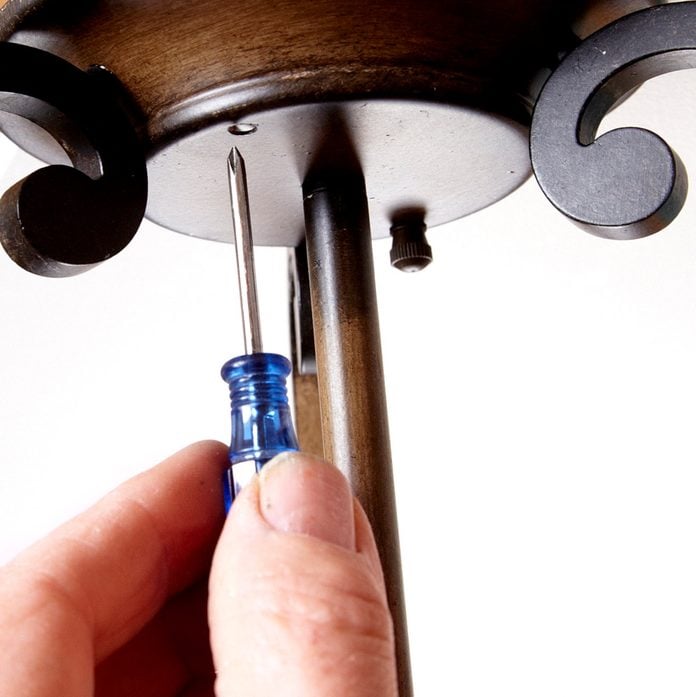
Step 8
Check Your Wiring Before You Buy the Light Fixture Replacement
- If your home was built before 1985, beware: Many new light fixtures can't be connected to pre-1985 wiring because the insulation on the wiring can't withstand the heat generated by the fixture.
- These fixtures carry a warning on the label: "Use wire rated for at least 90 degrees C."
- If you know your wiring was installed before 1985, you'll have to choose a fixture that doesn't carry this warning.
- Hanging fixtures, for example, usually don't require newer wiring because they don't heat the wiring as much as fixtures that mount directly against the ceiling.
- The alternative is to replace the wiring, which may be a small job, or huge, depending on the situation.
If you don't know the age of your wiring, look at the fine print. If you have plastic sheathed cable (Romex is one common brand) and can see the outer sheathing, look for "NM-B" or "UF-B." Or look for "THHN" or "THWN-2" on the insulation of individual wires. If you see any of these, the wiring can handle the heat.
Step 9
Buy Better Connectors
- The twist-on connectors supplied with most fixtures are all plastic; no metal threads inside.
- They just don't grip the wires for an easy, secure connection.
- Pro tip: Spend an extra few bucks on a pack of assorted small connectors with metal threads when you buy the fixture.
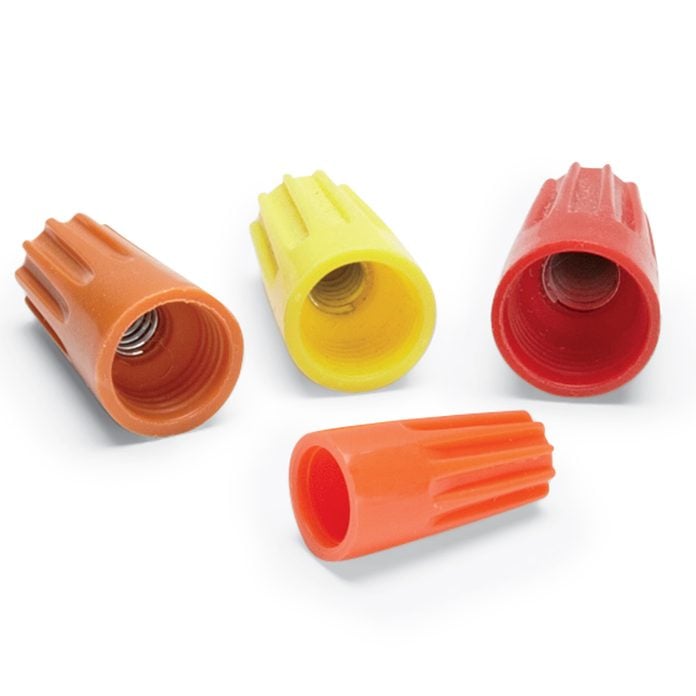
Step 10
Connecting Stranded Wire to Solid Wire
- Light fixtures almost always require a connection between solid wire and stranded. That's frustrating because the connector twists and pushes the stranded wire but doesn't grab it.
- Here's the solution:
- First, cut off the old exposed solid wire and then strip off 1/2 in. of the insulation.
- On the stranded wire, strip off 5/8 in.
- Hold the wires together so the stranded wire extends about 1/8 in. beyond the solid wire and twist on the connector.
- The end of the stranded wire will bunch up inside the tip of the connector, locked in place for a secure connection.

Step 11
Why Work in the Dark?
- If the light fixture and outlets in the room are on different circuits, plug in a couple of lamps before you shut off the power to the fixture.
- Otherwise, strap on a camping headlamp. You'll find them everywhere.
- Pro tip: Carry your flashlight on your head so you don't have to fumble around in the dark.
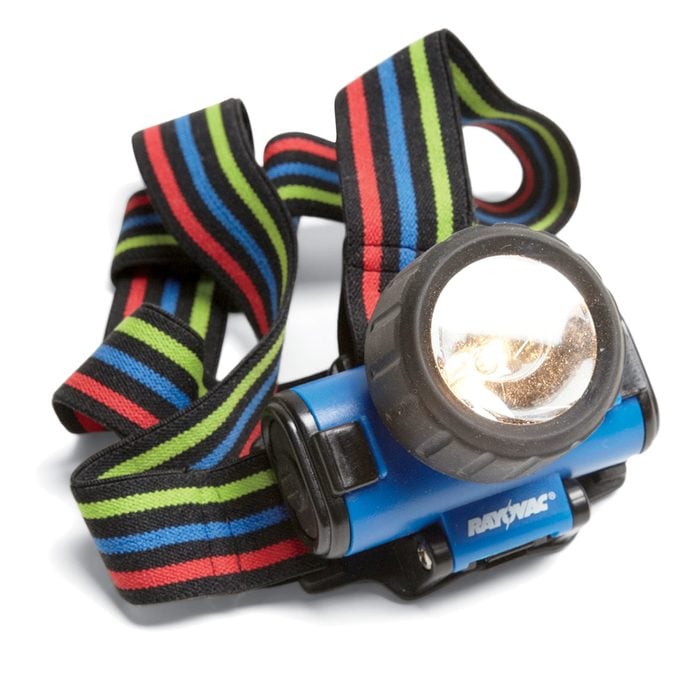
Step 12
Stripped Hole Fix
- The built-in screw holes on a metal box are easy to strip.
- And if that happens, your first impulse might be to use a drywall screw.
- Bad idea — the sharp tip can poke through wire insulation.
- Instead, use an electrician's tap to cut new threads in the hole.
- Pro tip: That will enlarge the hole from a No. 8-32 screw size to a No. 10-32, so you may need a couple of new screws, too.
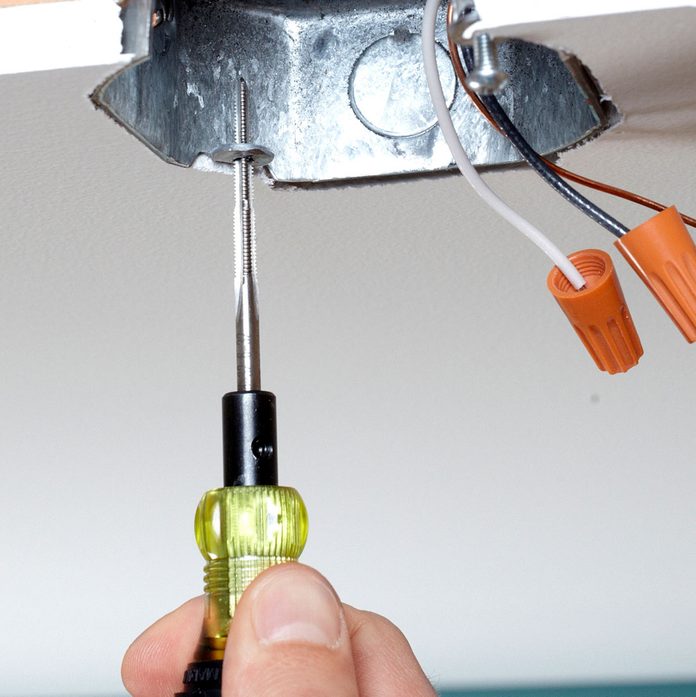
Step 13
Check for Ground
- Your new light fixture will have a ground wire (green coated or bare copper).
- But if you have an older metal box, there may not be a ground wire inside the box to connect to.
- Adding a ground wire to the box isn't difficult; just connect a six-inch section of bare copper wire to the box by driving a No. 10-32 ground screw into a threaded hole in the box.
- Pro tip: But before you do that, you have to make sure the box itself is grounded.
- Here's how to make sure your wires are grounded:
- Turn the power on and make sure the light switch is turned on.
- Find the hot wire (typically black or red) using your non-contact voltage tester.
- Next, you'll need a circuit tester.
- Touch one of the tester's probes to the bare end of the hot wire and the other to the box.
- If the light glows, the box is grounded.
- If not, a ground wire will need to be run to the box to meet electrical code. That's a job for a licensed electrician, unless you're a extremely knowledgeable DIYer.
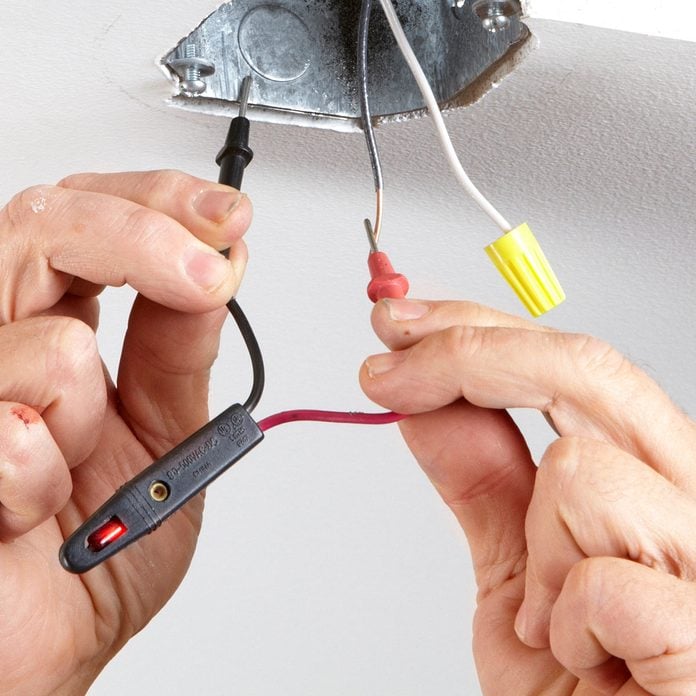
Step 14
Chandelier Chain Too Long? There's a Tool for That!
- Raising a chandelier is as easy as removing a few chain links.
- But opening and closing links without scratching or misshaping them can be a pain. That's why there's chain pliers.
- This tool bends links open and closed gently and neatly.
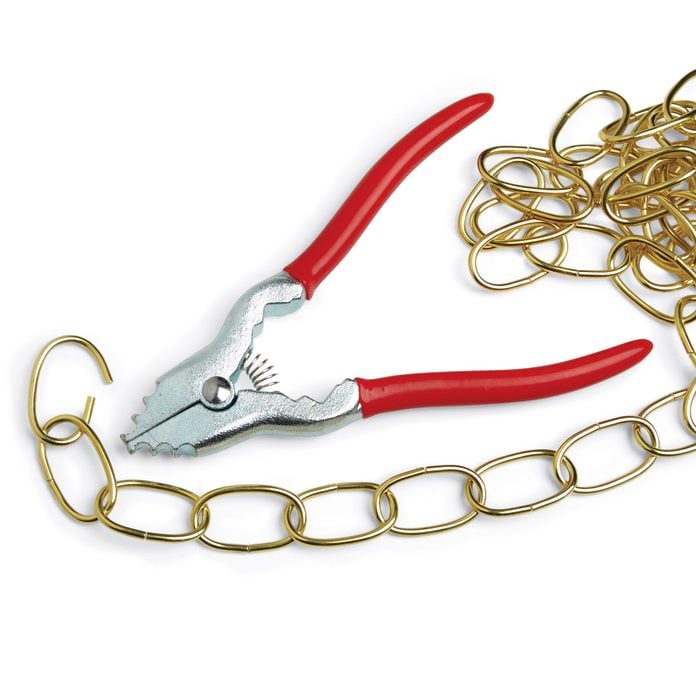
Originally Published: June 15, 2020
Source: https://www.familyhandyman.com/project/how-to-replace-light-fixture/